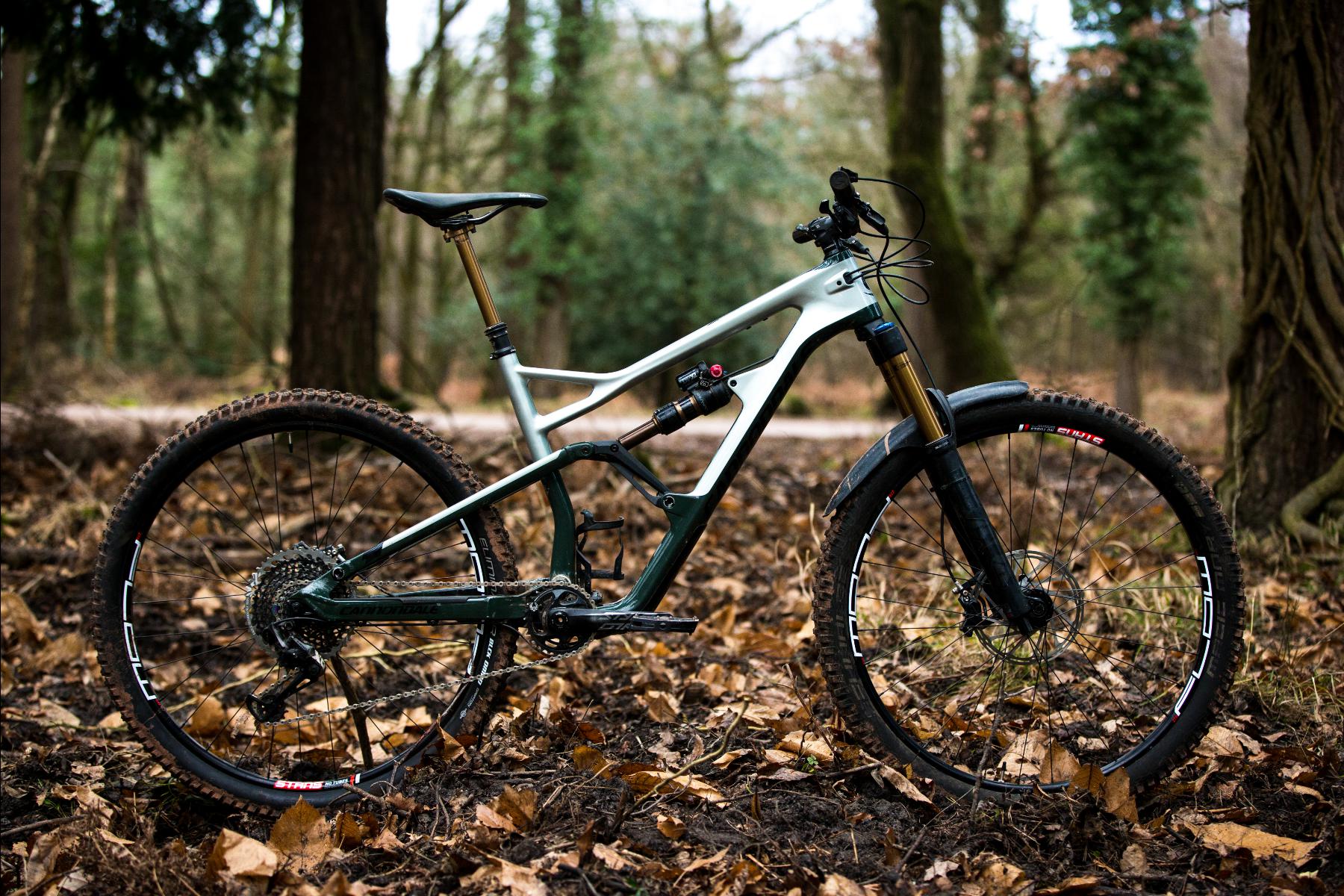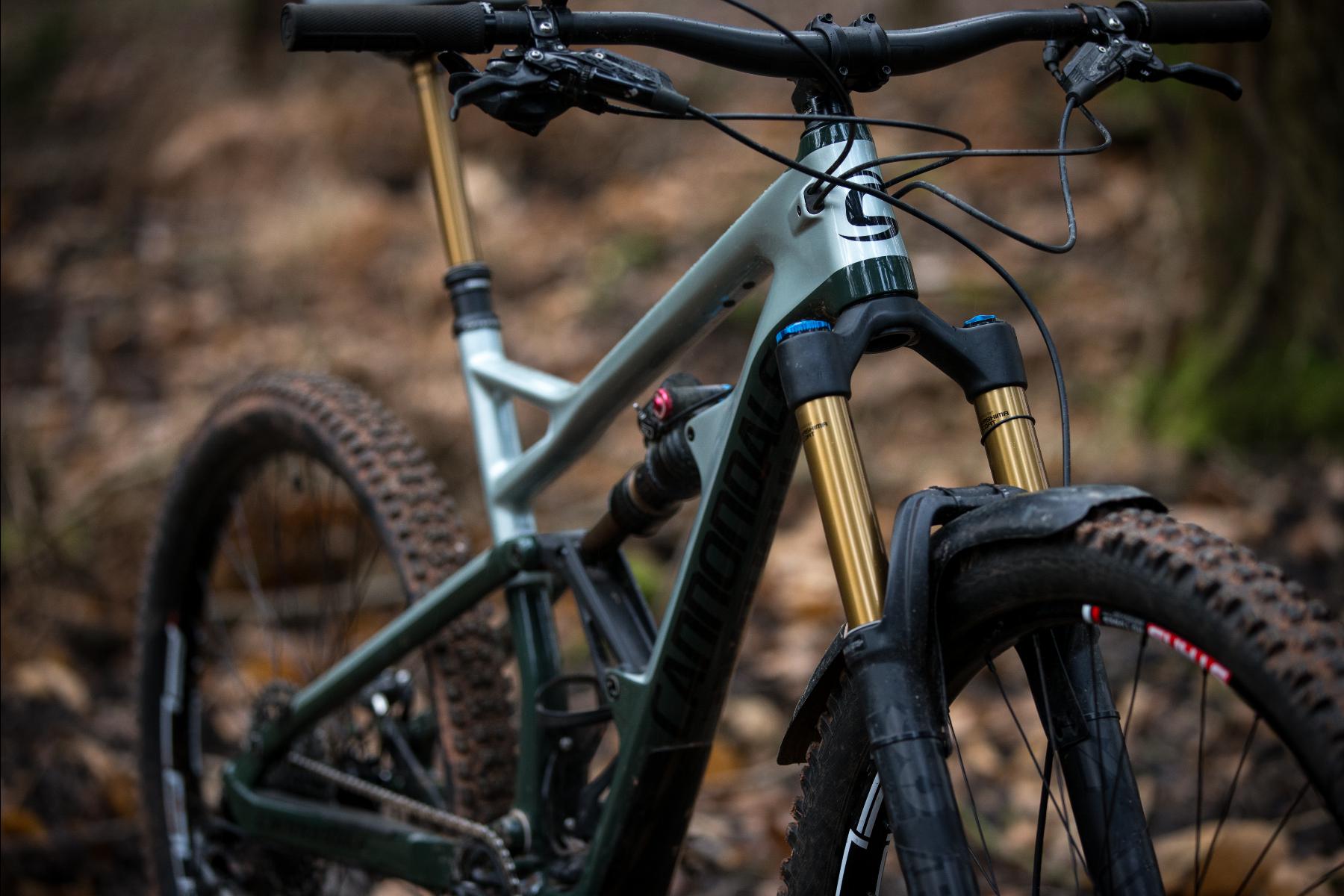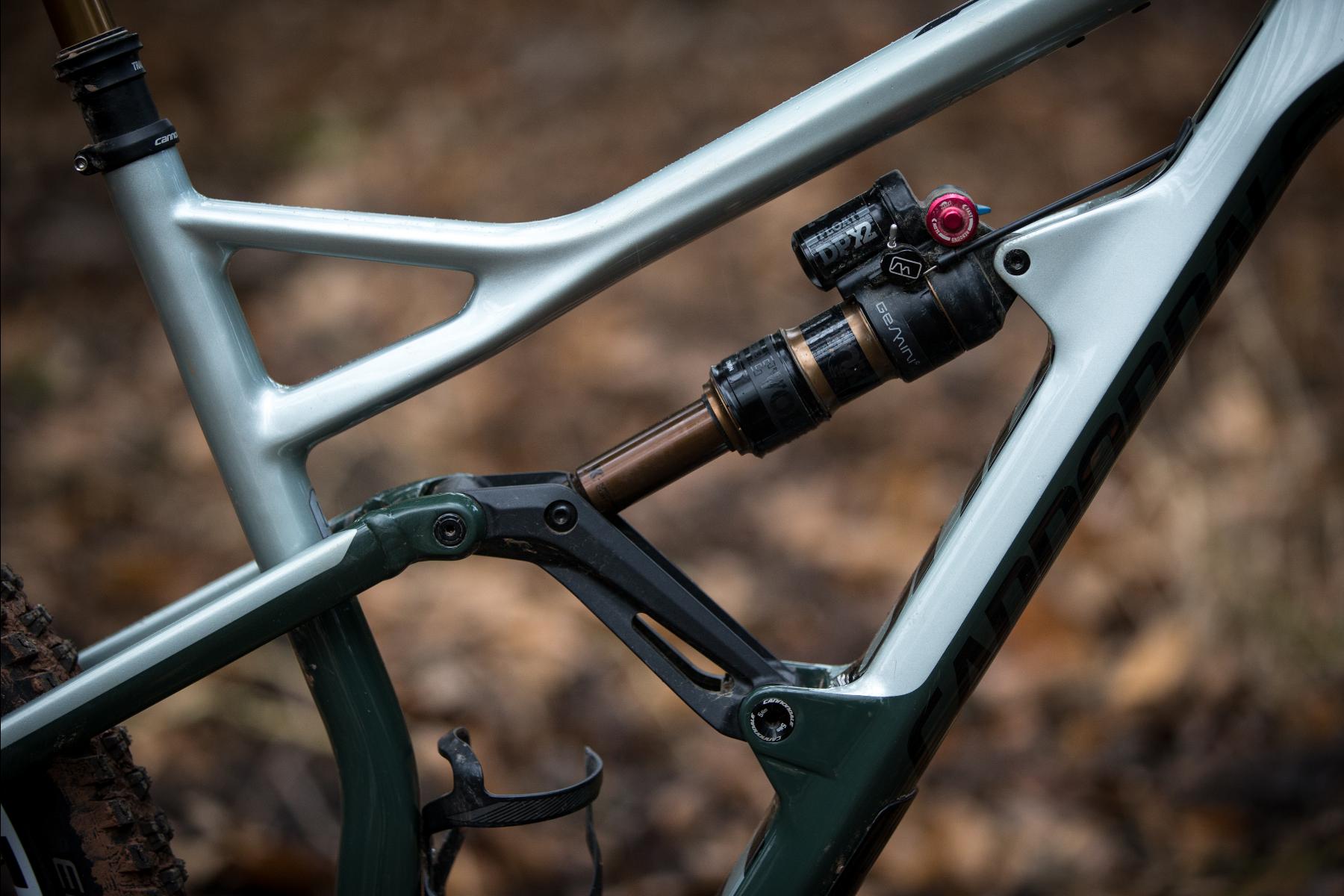The Cannondale Jekyll is a long travel, 29″-wheeled bike designed for some serious action. Ben has been putting it to the test to see what it can, and can’t, do.
While all eyes might have been on the recently launched Cannondale Sessions and their Habits, the Jekyll has been the go-to enduro race bike for Cannondale’s race teams for many a moon.
Here’s what Ben made of the carbon/alloy, 150mm 29er that is the Jekyll.
Photos by Dave Price.

Key features:
- Carbon front triangle, alloy rear.
- 150mm Fox suspension.
- 29″ wheels.
- Gemini system travel adjust.
- SRAM XO1 Eagle drive.
- S, M, L and XL sizes.
- £5,249.99 RRP
- Cannondale.com

Cutting a distinctive shape, the Jekyll 29er is the newest addition to the long running Jekyll family. It is based around the same design as the 27.5″-wheeled bike that came out about a year earlier and after a season of being piloted around the EWS circuit by the Cannondale team, the 29 is now available to buy for mere mortals like us.
I was lucky enough to test the top of the range Jekyll 29-1 model over a few wet and muddy months of UK winter riding. The top level parts list leaves nothing to be upgraded or swapped out and it is truly ready to race or rip straight out of the box.

The Jekyll rolls on a set of stealthy black-stickered Stan’s Flow Mk3 rims mated to SRAM hubs and wrapped in Maxxis Minion DHF 2.5 and DHRII 2.4 tyres in 3C compound, EXO casing. Braking is handled by my current favourite brake, the powerful and composed SRAM Code RSC and smooth, effortless gear shifts were provided throughout the test by a SRAM Eagle XO1 groupset complete with carbon cranks.
Other build highlights include a 150m travel (125mm for size small) Fox Transfer dropper post with Fabric Scoop saddle, a Cannondale own brand 780mm carbon bar and 35mm long stem.

The suspension layout is a single pivot design with a large rocker link to activate the rear shock. The front triangle is all carbon and has a load of nice touches, from the internal cable routing, the well placed protection and the fact that you can carry a full size water bottle in an upright position just above the bottom bracket.
The bumps are handled by a Fox Float Factory 36 fork complete with the FIT Grip2 Damper and sporting a very trendy 42mm offset. The rear shock is a modified Fox Float Factory DPX2 EVOL with a Gemini travel adjustment system fitted. What this means is that you have a lever on the bars that lets you switch the rear shock between 150mm ‘Flow’ and 120mm ‘Hustle’ modes depending on the terrain and whether you are going up or down hill.

Before the test I gave the guys at Cannondale my weight and they set up the size large test bike for me using the Jekyll 29 suspension guide and I must admit it was pretty much spot on and I only had to tweak the setup slightly throughout the test period.
For the first ride I headed to Bike Park Wales to bang out a load of laps on the uplift. First impressions were that the Jekyll was pretty easy to get along with, tracking well and hugging the floor nicely through the rougher sections. It was only when pressing through some big compressions and berms that I found myself being pitched forwards a bit and I did more than a few press ups on the bars coming out of fast turns.

To counter this I dropped a few psi from the rear shock until I was running about 38% sag and slowed it down by 2 clicks which certainly improved things. It would still occasionally misbehave in fast berms and I think that this is partly down to the supportive mid stroke of the suspension and the relatively high 355mm bottom bracket height working against you in fast berms.
In most situations I would describe the suspension on the Jekyll 29-1 as feeling very supple and well-balanced. When threading down natural trails it sits nicely in the middle of its travel where it remains active and quite poppy, making it easy to ride fast. When you combine the Fox suspension with the quality carbon bar and frame the Cannondale gives you a comfortable, forgiving and near silent ride.

Almost all of the riding I did was wet and slippy, and in these conditions there was loads of grip available from the suspension, tyres and geometry all working together as one system, letting me get off the brakes and enjoy the mud.
Interestingly Cannondale’s marketing goes on about how short their chainstays are on this bike, but at 442mm I don’t think that they are very short for a 29er with many modern 29ers sporting 435mm stays. The thing is that to me and many other riders out there we actually don’t want ultra short chainstays, particularly on a longer travel 29er. Part of the reason why I really like this bike and felt so quick on it is because it does not have very short chainstays.

They are not as long as the 450mm monsters on the Nukeproof Mega 290 which I love, but they strike a real nice balance between stability at speed and the ability to quickly change direction and manual it at will. It feels to me like the Cannondale marketing dept are just getting carried away telling us what they think we want to hear.
The riding position afforded by the 463mm reach in the size large combined with the supple Fox suspension meant that I found it easy to find balance between front and rear wheel grip in the turns. The Jekyll changes direction quickly and through rock and root strewn natural trails it is a lot of fun to ride. When things get steeper the 65 degree head angle and beefy Maxxis Minion DHF gives you confidence to place the front wheel. Having said that, you really need to run a lot of shock sag for the steepest trails due to the high bottom bracket and the risk of your weight being too far forward.

One of the things that makes this bike unique is the Gemini travel adjust system which switches between 2 modes for either climbing or descending. In the 120mm travel mode the bike sits more upright in its travel and has a more supportive platform for pedalling compared to the fully open 150mm travel mode.
The lever for the Gemini system is not very nice to be honest as it sits above the bar in a position that I found hard to reach during technical riding. It looks cheap and plasticy compared to the rest of the bike but to be fair it did have a nice smooth action when you could get your thumb to it.

I only really used it on fire road climbs to slightly improve the riding position offered by the 75 degree seat angle. I personally appreciate simplicity and found the Jekyll pedalled well enough in 150mm travel mode, so I actually stopped using it. If it were my bike I would just take it off completely. Cannondale would do well to emulate the quality lever that Canyon spec for their Shapeshifter 2.0 system on the new Strive that I did a first ride on recently.
What do we think?
Overall I found the Jekyll to be a great bike for most of the riding that I do regularly. It is easy to ride fast, forgiving rider mistakes and letting you decide whether to hop, pop, send or take the high line through any section of trail.
I would prefer a lower bottom bracket that I think would enhance the cornering and steep terrain capability of the bike but on the whole it is great fun to ride and nothing needs changing or upgrading out of the box which makes a nice change.
We love:
- Race-ready out of the box.
- Geometry, suspension and spec work well together.
- Confidence-inspiring ride.
Could do better:
- Gemini lever could do with refinement.
- Bottom bracket could be a touch lower.



